Trapezoidal screw / Related parts for trapezoidal screw
With trapezoidal tooth profile, it is a type of screw transmission. Motion and power are transmitted through the engagement of the nut and screw, converting rotary motion into linear motion. Trapezoidal screws feature high transmission efficiency, accurate positioning, and high load-bearing capacity.
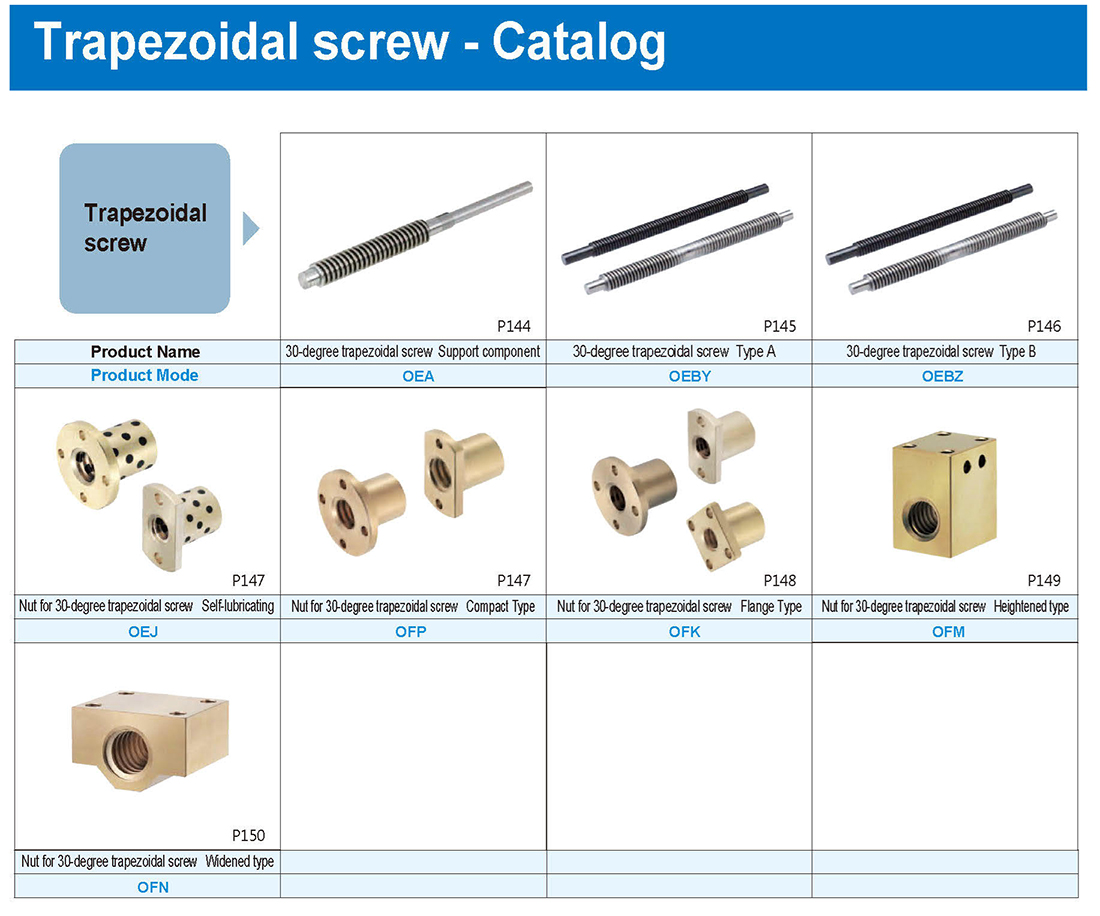
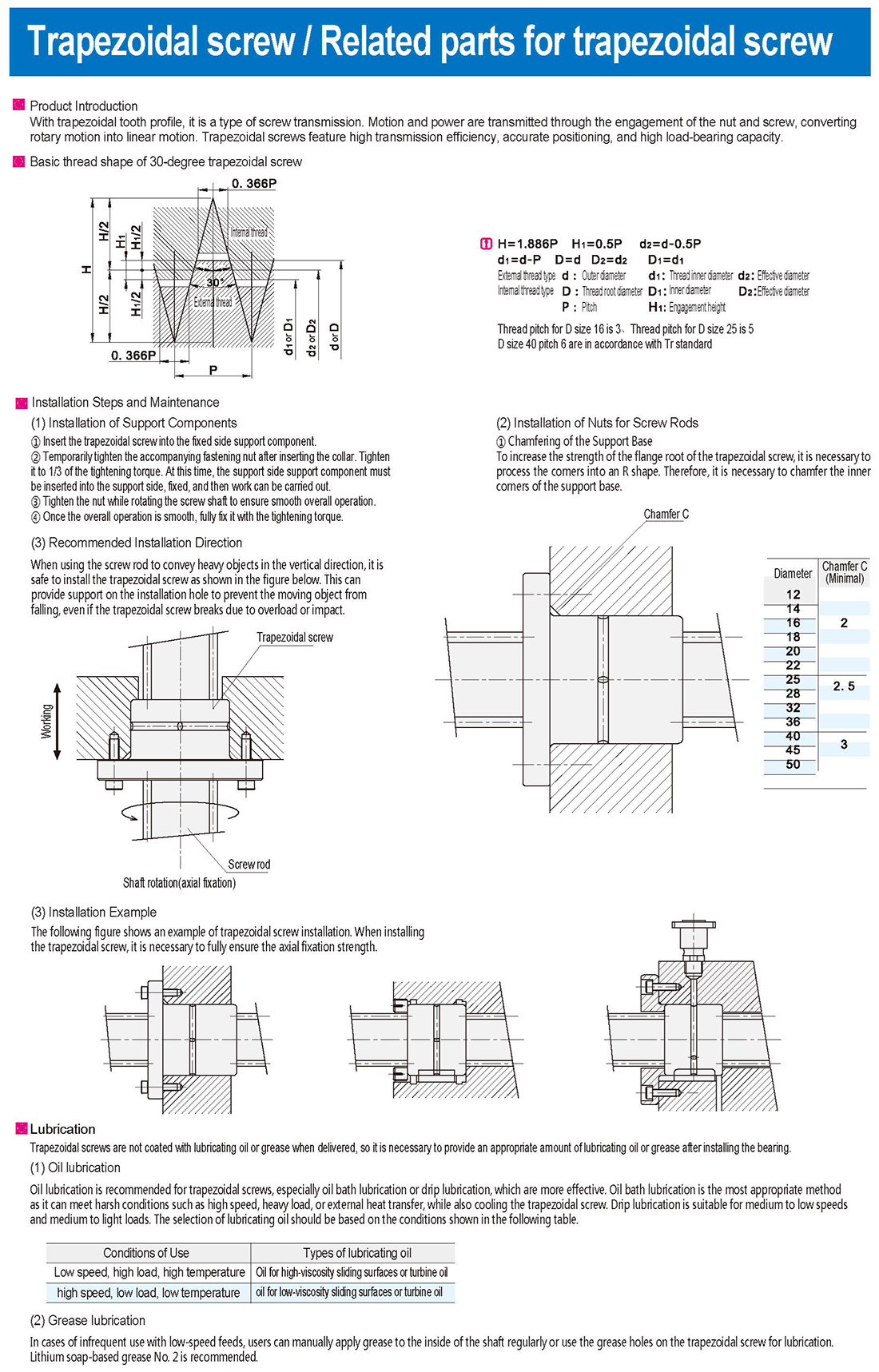
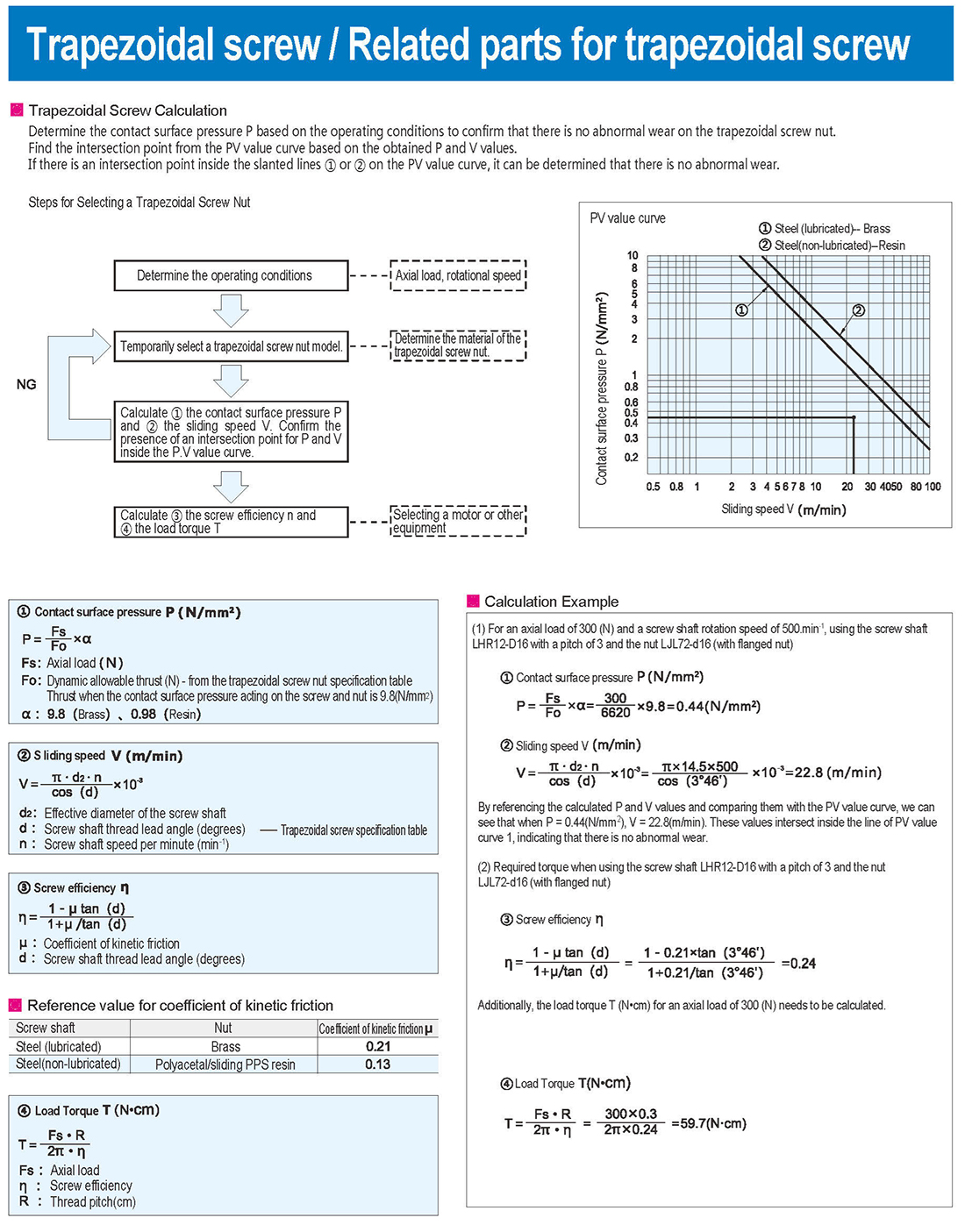
Installation Steps and Maintenance
(1) Installation of Support Components
① Insert the trapezoidal screw into the fixed side support component.
② Temporarily tighten the accompanying fastening nut after inserting the collar. Tighten it to 1/3 of the tightening torque. At this time, the support side support component must be inserted into the support side, fixed, and then work can be carried out.
③ Tighten the nut while rotating the screw shaft to ensure smooth overall operation.
④ Once the overall operation is smooth, fully fix it with the tightening torque.
(2) Installation of Nuts for Screw Rods
① Chamfering of the Support Base
To increase the strength of the flange root of the trapezoidal screw, it is necessary to process the corners into an R shape. Therefore, it is necessary to chamfer the inner corners of the support base.
(3) Recommended Installation Direction
When using the screw rod to convey heavy objects in the vertical direction, it is safe to install the trapezoidal screw as shown in the figure below. This can provide support on the installation hole to prevent the moving object from falling, even if the trapezoidal screw breaks due to overload or impact.
Screw rod Shaft rotation (axial fixation) Chamfer Diameter
(1) Installation Example
The following figure shows an example of trapezoidal screw installation. When installing the trapezoidal screw, it is necessary to fully ensure the axial fixation strength.
Lubrication
Trapezoidal screws are not coated with lubricating oil or grease when delivered, so it is necessary to provide an appropriate amount of lubricating oil or grease after installing the bearing.

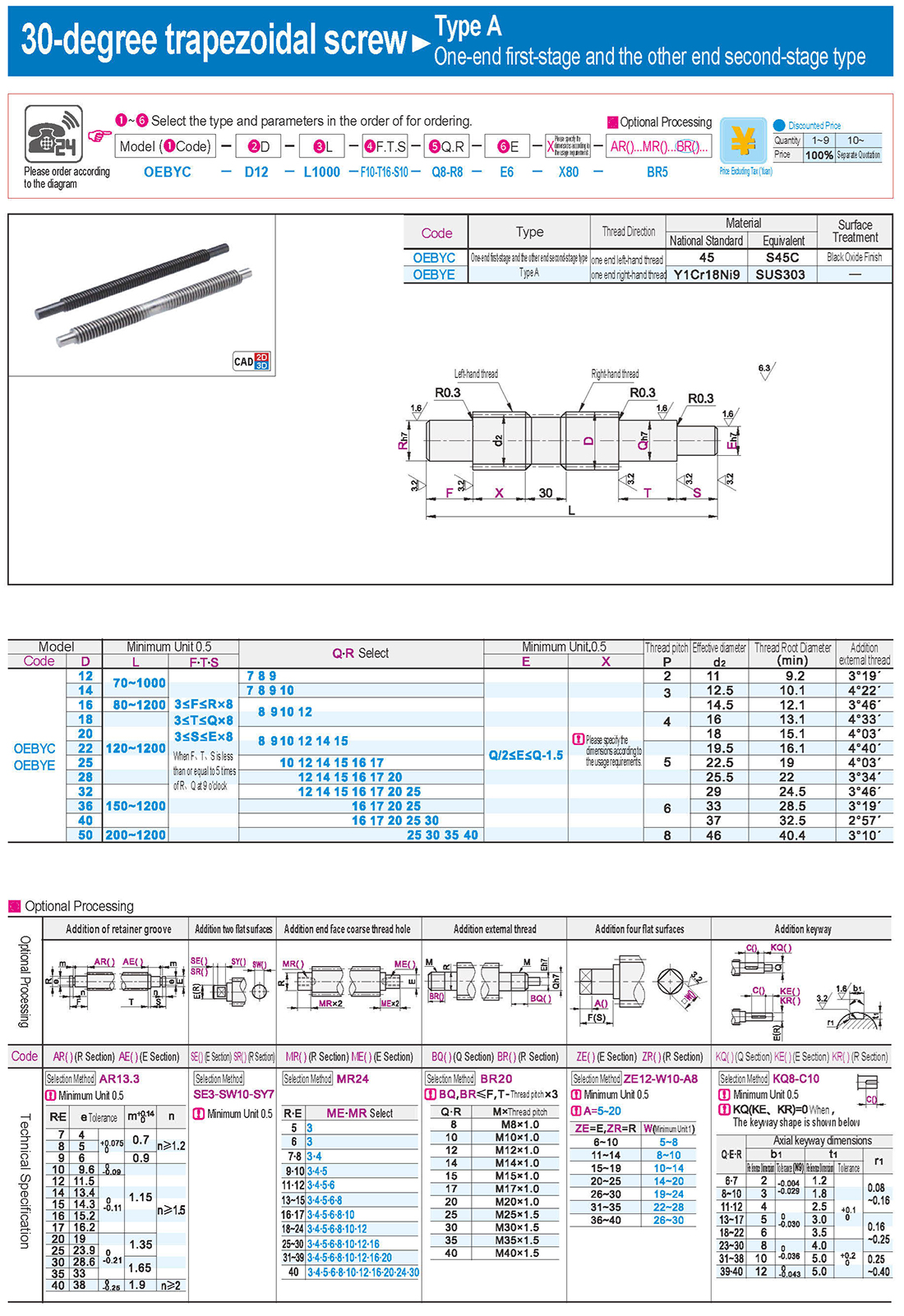
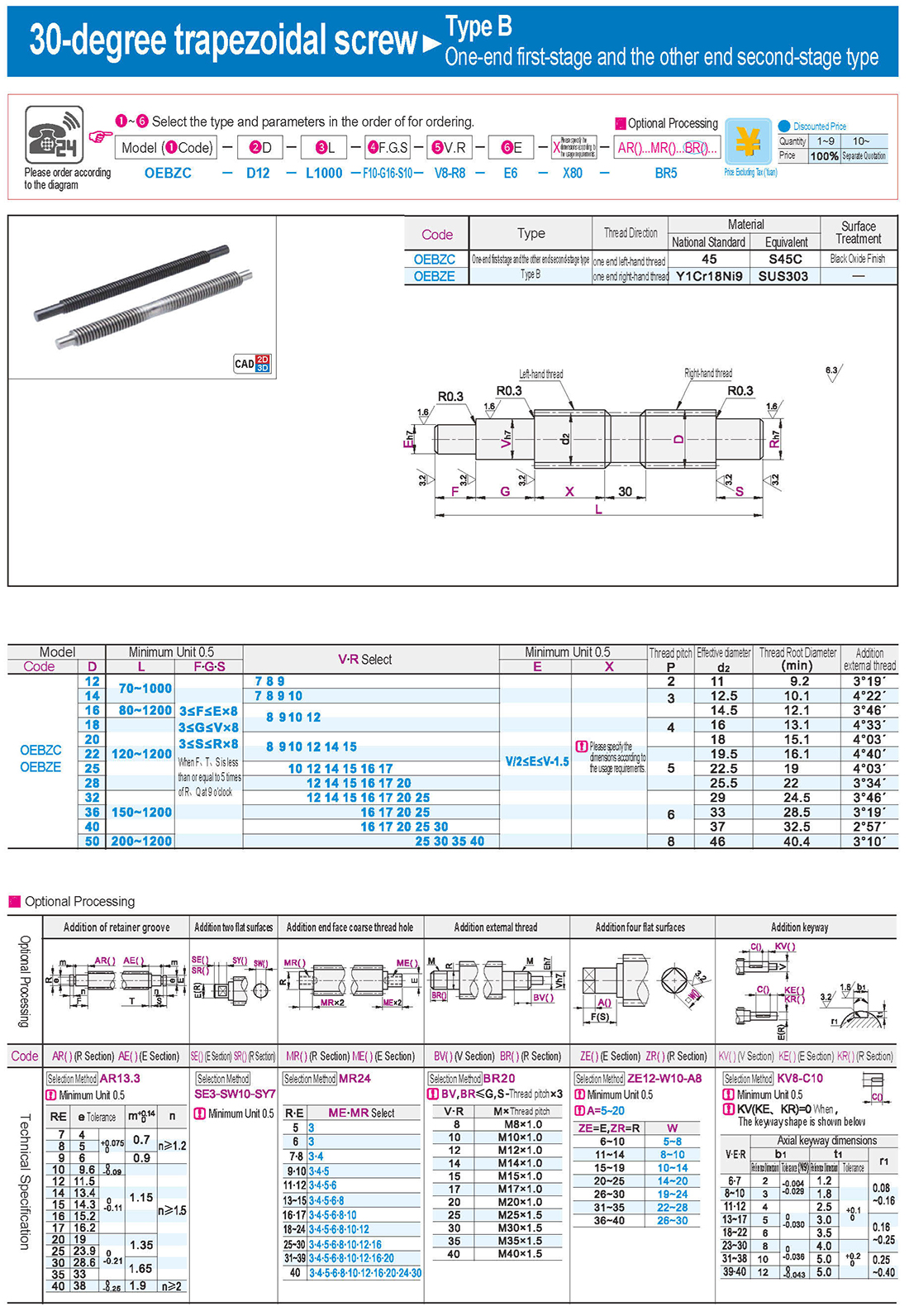


 English
English Russian
Russian Spanish
Spanish Italian
Italian Arabic
Arabic Korean
Korean German
German Japanese
Japanese Vietnamese
Vietnamese Turkish
Turkish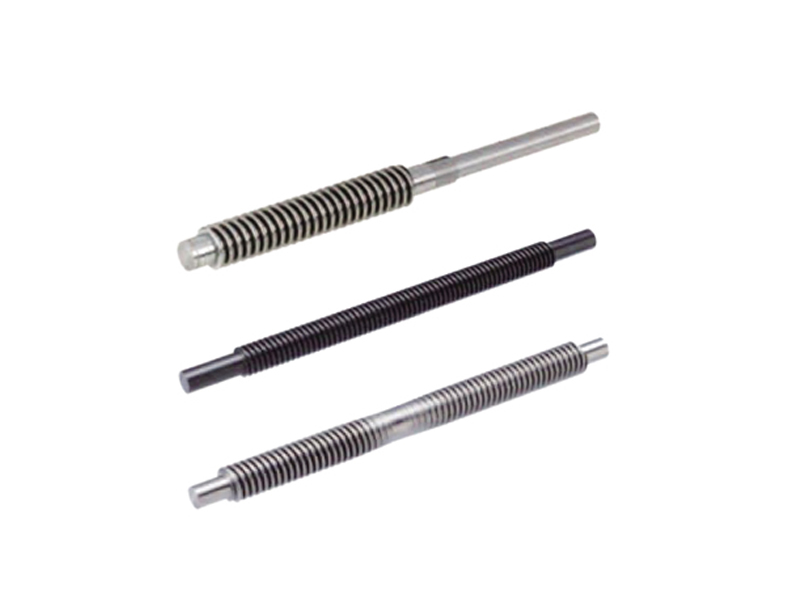
 Introduction
Introduction Specification Table
Specification Table Download
Download






